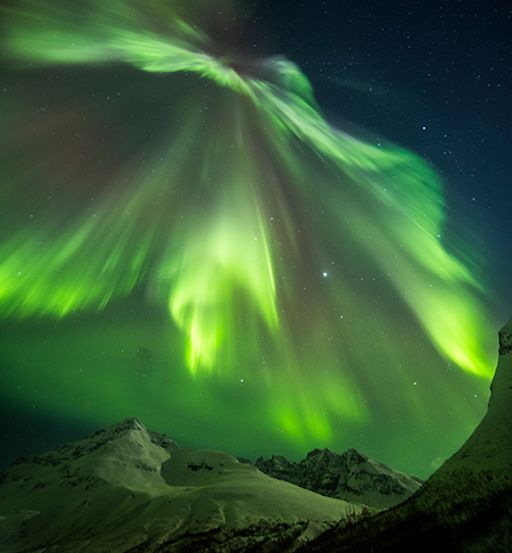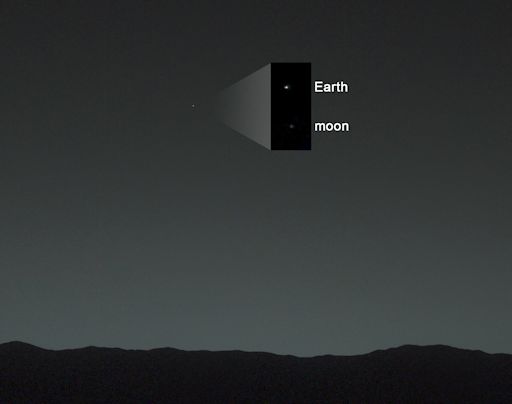DECLINING CHANCE OF FLARES: Departing sunspots AR1967 and AR1968 are in a state of decay. Even so, both retain unstable magnetic fields that harbor energy for strong flares. NOAA forecasters estimate a declining but significant 60% chance of M-flares and a 20% chance of X-flares on Feb. 8th. Solar flare alerts: text, voice
CME IMPACT SPARKS AURORAS: A minor CME hit Earth's magnetic field on February 7th. The light show it produced was anything but minor. "BANG!" says Truls Tiller of Tromsø, Norway. "The sky exploded in auroras." In every direction he turned, he saw a scene like this:
"I could hardly decide which direction to point my camera," he says. "The sky was filled with light for more than four hours."
More auroras are in the offing. A solar wind stream is expected to reach Earth this weekend even as Earth's magnetic field continues to reverberate from the Feb. 7th CME impact. NOAA forecasters estimate a 60% chance of polar geomagnetic storms on Feb. 8-9. Aurora alerts: text, voice
CURIOSITY PHOTOGRAPHS EARTH: Last year when the Cassini spacecraft photographed Earth through the rings of Saturn, the whole world was alerted to smile and wave. Last week, Curiosity did the same thing with less fanfare. Except for a few scientists, no one knew the Mars rover would be taking this picture of the Earth-Moon system on Jan. 31st:
Mission controllers used the left eye of Curiosity's Mast Camera (Mastcam) to capture the scene about 80 minutes after local sunset in the Dingo Gap. Our planet was the brightest thing in the darkening Martian sky. A human observer with normal vision, if standing on Mars, would have easily seen Earth and the Moon as two distinct "evening stars." The distance to Earth when Curiosity took the photo was about 99 million miles. For more information about Curiosity's adventures on Mars, visit mars.jpl.nasa.gov.

Solar wind
speed: 441.4 km/sec
density: 2.4 protons/cm3
explanation | more data
Updated: Today at 1757 UT
X-ray Solar Flares
6-hr max: C3 1230 UT Feb08
24-hr: C3 1230 UT Feb08
explanation | more data
Updated: Today at: 1700 UT
![]()
Daily Sun: 08 Feb 14
Departing sunspots AR1967 and AR1968 pose a declining threat for Earth-directed flares. Credit: SDO/HMI
![]()
Sunspot number: 241
What is the sunspot number?
Updated 08 Feb 2014
Spotless Days
Current Stretch: 0 days
2014 total: 0 days (0%)
2013 total: 0 days (0%)
2012 total: 0 days (0%)
2011 total: 2 days (<1%)
2010 total: 51 days (14%)
2009 total: 260 days (71%)
Update 08 Feb 2014
The Radio Sun
10.7 cm flux: 178 sfu
explanation | more data
Updated 08 Feb 2014
![]()
Current Auroral Oval:
Switch to: Europe, USA, New Zealand, Antarctica
Credit: NOAA/POES
![]()
Planetary K-index
Now: Kp= 2 quiet
24-hr max: Kp= 4 unsettled
explanation | more data
Interplanetary Mag. Field
Btotal: 6.4 nT
Bz: 4.3 nT south
explanation | more data
Updated: Today at 1757 UT
![]()
Coronal Holes: 07 Feb 14
A solar wind stream flowing from the indicated coronal hole should reach Earth on Feb. 8-10. Credit: SDO/AIA.






